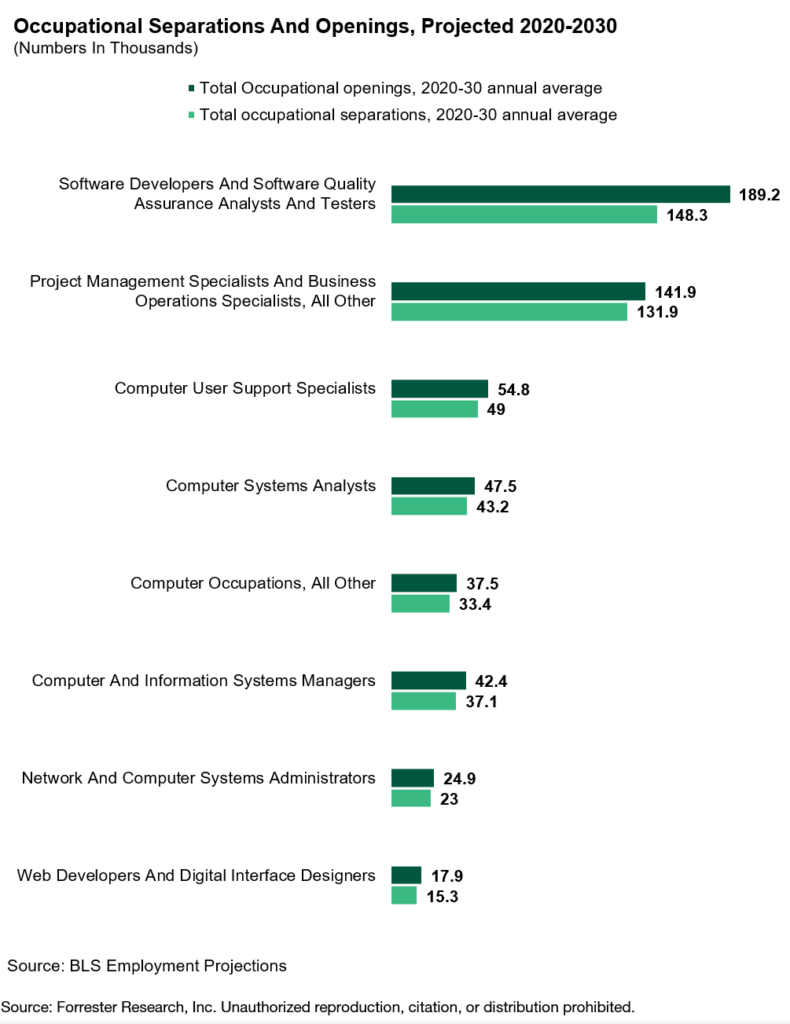TIER: Better Understand The Tech Labor Market To Unlock Your Labor Strategy
Tech execs have a growing problem: There is huge competition to attract and retain an evolving pool of tech talent. In February 2022, job postings for tech occupations hit record levels, increasing to more than 388,000 active monthly postings — some 50,000 postings more than January. And solutions are coming from everywhere. The city of Savannah, Georgia, established the Savannah Technology Workforce Incentive, which offered $2,000 to qualified technology workers who move to the city. The existing dearth of talent, combined with both offshore labor disruptions due to the war in Ukraine and a volatile economy, will drive substantial compensation inflation and exacerbate labor shortages. In 2022 alone, Forrester forecasts at least a 7% increase in tech staff spending in the United States.
With demand for tech talent set to outpace increases in supply, this problem won’t disappear anytime soon. According to the Bureau of Labor Statistics (BLS), roles such as software development and project management are projected to grow significantly in the next decade. The BLS projects that there will be 189,200 openings for software developers, software QA analysts, and testers each year on average from 2020–2030. Similarly, project management specialists and business operations specialists are projected to have 141,900 occupational openings each year on average for the decade.

Furthermore, an ongoing workforce transformation will result in increased automation and additional demand for a talent pool that can provide novel ideas and solutions to as-yet-unknown challenges. This is evident in organizations’ most in-demand skills of 2022, where SQL, Python, and Java top the list, clearly beating out infrastructure and operations skills. These skills create capabilities in application development and maintenance, providing flexibility for organizations to adapt their talent and drive business value. As organizations focus on becoming more “future fit,” demand will only increase for well-rounded candidates who possess both hard and soft skills — those who deliver on the technical end but also understand the interpersonal dynamics required to be a part of an agile and adaptive team. Thus, tech execs must keep track of today’s in-demand tech skills and emerging technologies to recruit and retain a cross-skilled workforce. This will reduce the need to cycle back to the tight labor market.
What will your solution be to these problems? One element is to compete on employee experience (EX), elevating your EX practices to both retain and recruit talent. Another element is to take a macro-level view of labor trends to inform your “future fit” labor strategy. To do so, utilize Forrester’s recently published 2022 US Tech Labor Market report, which provides a comprehensive outlook on labor market trends that will impact how tech execs source, manage, and invest in talent.
The 2022 US Tech Labor Market falls under Forrester’s tech insights and econometric research (TIER).
